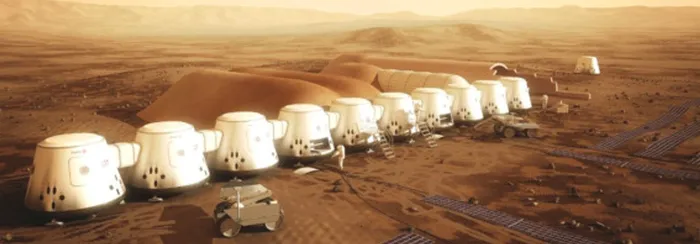Eight years of training for their whole new world

An artist's impression of the Mars colony for the first 24 settlers. An artist's impression of the Mars colony for the first 24 settlers.
Each astronaut undergoes eight years of training with periods of isolation every two years within their teams, while they learn skills to survive on Mars.
This is a one-way mission with no option of the pioneers returning home to Earth.
In 2020, a rover will be sent to Mars to identify a location for the settlement and prepare the surface for the arrival of cargo missions.
Communication satellites will be launched into orbit around the sun to enable 24/7 communication with Mars.
Two living units, two life support systems and two supply units will be sent to Mars in 2022, with the remainder of the units arriving the next year.
The life support and living units will be set up by a rover with the life-support unit connected to the living units transporting water, air and electricity activating the life support system.
The journey to Mars will be a gruelling seven to eight months in a small space with no option of showering, only using wet wipes, and all food is freeze dried and canned.
There is a regimented three hours of exercise daily and, if hit by a solar storm, astronauts will take refuge in a smaller area of the rocket for several days.
Once on Mars, astronauts will reside in living units of 50m2 per person, including bedrooms, working areas, a living room and “plant production unit”.
When leaving the living units, astronauts will wear a “Mars suit”, but all living areas are connected by passageways.
As the rovers have done most of the heavy construction before their arrival, the first set of astronauts will quickly find their routine.
New components will be delivered to the group.
Astronauts will spend much of their time researching on Mars, including how food crops and plants grow in hydroponic plant production units, determining if life was present on Mars or still exists, as well as the effect on the human body of living in a 38 percent gravitational field.